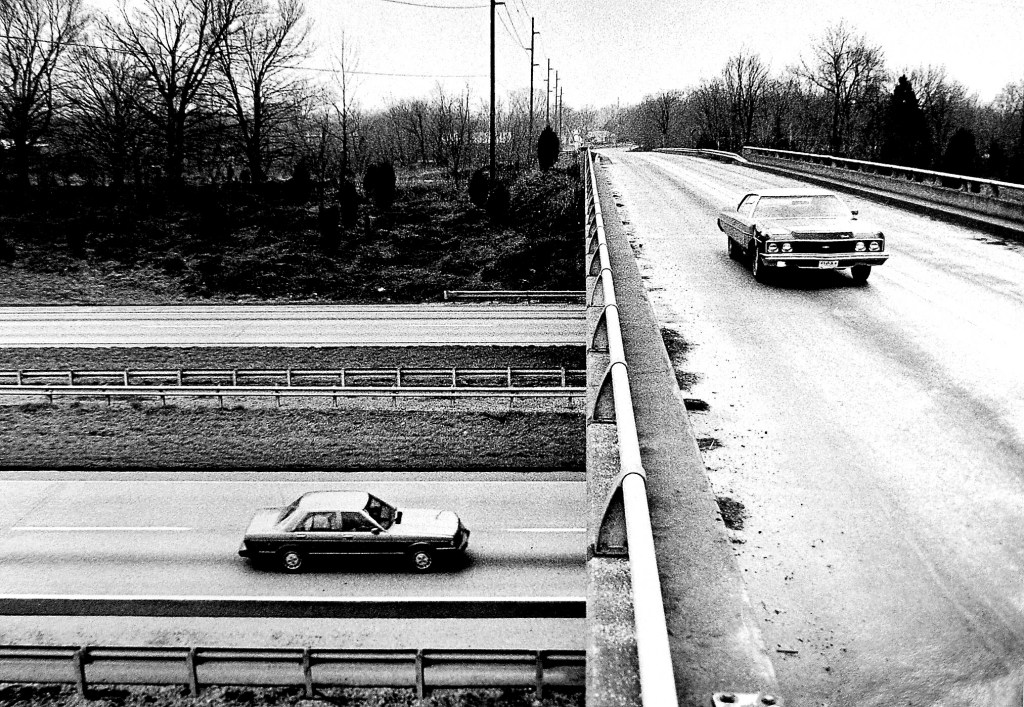Interstate 65 considered city’s ‘river of gold’
Published 11:23 am Friday, September 14, 2012

- KY MUSEUM WORKMAN PHOTO Cemetery rd bridge over I-65
Any economic developer will tell you that a town’s close proximity to an interstate highway is key in bringing in new business and industry.
Bowling Green’s location near Interstate 65 also has led to the community becoming a cultural, commercial and educational center for the Barren River region.
Trending
Every day, between 40,000 and 52,000 vehicles travel on I-65 at Bowling Green’s door. Many of those drivers open the door and enter the city either for work, pleasure or a number of other reasons.
“I can only refer to what one of our former board members, Leon Volkert, used to say: ‘It’s our river of gold,’ ” said Vicki Fitch, executive director of the Bowling Green Area Convention and Visitors Bureau.
“Every day and every night it brings an enormous amount of people into our city,” Fitch said. “They come here and enjoy themselves and spend money. It’s very valuable.”
Jeff Moore, chief of the Division of Planning for the Department of Highways in Bowling Green, said it’s difficult to tell just where those vehicles are coming from.
It’s not difficult, though, to survey the license plates in parking lots or talk to people at large public gatherings to learn that many of them are coming from outside Bowling Green and Warren County.
What Moore does know is that an estimated 47 to 50 percent of those vehicles on the interstate are trucks. Following the 1956 National Highway Act, the federal government set about building an interstate system that would be used to move freight, among other things.
Trending
The first pieces of I-65 to be built in this area were constructed in 1964-65 near Oakland.
Looking back through old traffic counts, Moore said the section of I-65 between the William H. Natcher Parkway and what’s now known as Greenwood Interchange opened in 1966. The traffic count that year was 5,760 vehicles a day. It went to 10,000 vehicles a day in 1969 and in 2010 had 49,400 vehicles a day.
The section between Greenwood Interchange and Cemetery Road is almost used as a local street, getting traffic from the Scottsville Road area to Cemetery Road and beyond. An estimated 52,500 vehicles a day travel that section of the road.
Construction of the Cemetery Road interchange was not without controversy. It had been on the minds of planners since the 1970s but was taken off the books after there was local opposition to the project.
It was 1997 when the project came back around after agreements were reached with a coalition of citizens that the interchange and resulting expanded Cemetery Road would not be commercialized. The state included landscaping in the construction contract, with construction beginning in 2001 and the road opening in December 2002. And now the entryway’s landscaping is maintained by Operation P.R.I.D.E. and has set a high standard for the group’s other entryway projects.
“What also has helped Bowling Green is being a part of the National Highway Network that includes Cumberland Parkway to the east and Natcher Parkway to the Northwest,” Moore said. “Those roads (including I-65) kind of cradle us, so transportation-wise we’ve been in a good spot and that has helped us grow.”
But I-65 really has the most effect on growth, particularly compared to Owensboro that hasn’t seen nearly the population growth that Bowling Green has over the years. Bowling Green has an interstate and Owensboro does not, at least not technically. A portion of the roads around Owensboro were recently designated as being part of the Interstate 64 system, but the roads as of yet have not been improved.
Ron Crouch, former state demographer, said a look at the population growth from 2000 to 2010 shows that most of the state’s growth is between I-65 and I-75, with Bowling Green and Warren County right in the thick of it.
The state’s population grew by just 7.4 percent during the time period, while Warren County’s grew 22.6 percent. During the same time, Daviess County grew just 5.5 percent.
Being close to an interstate helps not only drive population growth, but also makes nearby towns the center of economic activities, including retail, education and health care, Crouch said.
Historical census numbers show Bowling Green having a population of 18,347 in 1950, while Owensboro had 33,651. In 1960, Bowling Green’s population had increased to about 26,909 and Owensboro, which had and continues to have a strong river port, went to 42,178. Bowling Green’s growth continued to be steady while Owensboro’s slowed. In 2010, Bowling Green surpassed Owensboro and is now the state’s third largest city. Bowling Green had grown to 58,067 people and Owensboro was at 57,265.
Improvements to I-65 in the last decade are helping to make the road safer. The road is now six lanes between the Cumberland Parkway and the Tennessee state lane. Two more widening projects will create a six-lane road northward to just beyond Horse Cave.
There also are plans to install another interchange on I-65 in this area. This would provide a full interchange near Oakland and make a connection to the Kentucky Trimodal Transpark. Much of the funding for that project has been on the books for years. But its beginning has been delayed by a federal court case that still is on appeal. All of the design work is complete.
Continued expansion of jobs in the transpark is dependent on improving that connection, county leaders have said.
The amount of truck traffic on I-65 is only expected to increase, particularly after the Panama Canal opens more shipping lanes in late 2014, Moore said. And increased traffic increases the potential for more vehicles to pull off the roads here.



